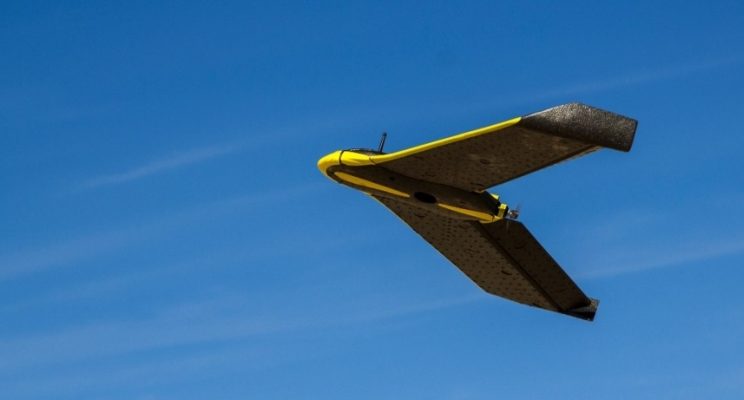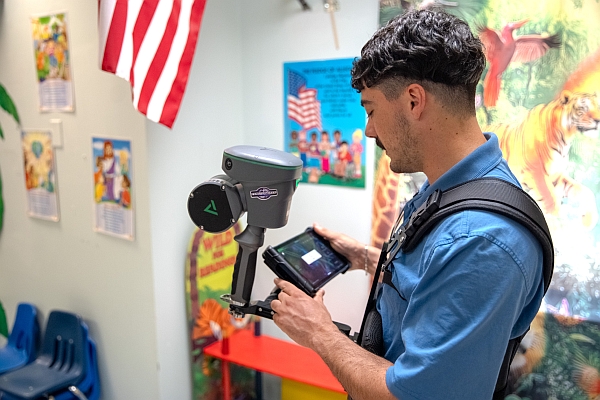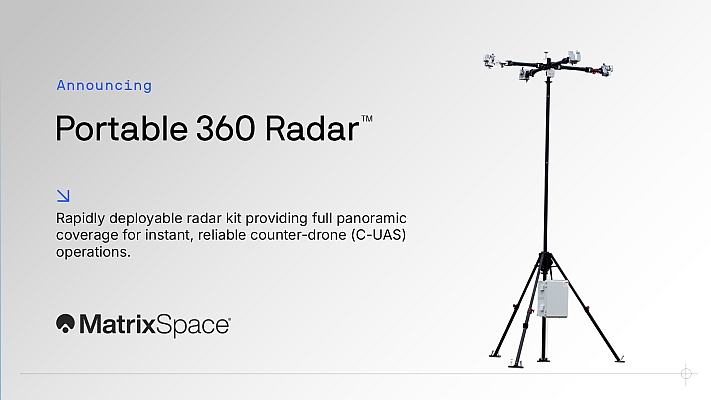While the benefits of drones and their robust return on investment are well understood, conversations about how easy they are to implement operationally continue. Here, we explore the challenges of integrating drones into workflows and discuss whether unmanned aerial vehicles (UAVs) should be considered a simple tool or if in-depth training and education is required to become an effective, responsible, and compliant drone operator.
Taking drones to the next level
Drones offer significant mapping potential, enabling in-depth data and insights to be gathered for better informed decision-making in a wide range of applications. As UAVs have become more accessible and awareness has grown on the benefits across verticals, from agriculture and construction right through to public safety and emergency response, more advanced drone operations are gaining momentum. Advanced drone operations, which encompass operations including flights beyond the visual line of sight (BVLOS), operations over people (OOP) and flying multiple drones as part of a fleet, bring next level data collection efficiencies and long-term cost benefits to geospatial professionals – but given their more complex nature, they often come with additional safety and logistical considerations. For instance, these types of flights typically require extensive forward planning and permissions from the relevant authorities to ensure the UAV can fly safely and in line with local legislation. Advanced operations also generally necessitate greater data accuracy, cameras with a higher resolution or longer flight times – bringing heavier and more complex payloads. However, the heavier a drone, the more risk is being taken, requiring further procedures to be put in place during operation to ensure safety. This makes the debate on whether drones are a simple tool or require serious piloting skills more important than ever, as it may appear that more effort and skills are needed.
Overcoming barriers
Understanding of the common challenges that drone operators face when introducing the technology into their workflow is an integral part of understanding why this debate is so important. One of the main barriers is the ever-changing regulatory landscape – particularly when it comes to advanced operations. Across the globe, the rules vary widely from country to country, often requiring different waivers to be completed – to varying levels of training. In the US, for example, the Federal Aviation Authority (FAA) requires a Part 107 Waiver – an official document that approves certain operations of aircraft outside the limitations of regulation. Alongside this, there are also widespread concerns about how to ensure smooth integration with other traffic, particularly with the complexity of different airspaces and procedures to follow. Although the rules continue to evolve, there are still some significant discrepancies between regions.
At the same time, despite increased adoption of drones, awareness and understanding of the technology remains varied. For those with less experience in this area, there is still limited understanding about UAVs and how the data is processed and kept secure. For example, how is it shared with teams? This knowledge is ultimately essential to ensure stakeholder buy-in, helping to convince future operators and clients that drones will bring important benefits, including efficiency, data quality and cost-effectiveness. Steps must therefore be taken to ensure a consistent level of knowledge and training between operators – particularly from country to country.
Improving responsibility
Although challenges remain, the drone landscape is certainly changing. Drone projects are becoming more complex, as demands grow from the relevant authorities for a higher level of coordination. In turn, this is driving a greater need for pilots to have a deep understanding of safe and responsible drone operations. Since the technology is still relatively new, drone operators all have a responsibility to learn new skills and understand the regulatory landscape as legislation evolves. For instance, since the emergence of more advanced drone applications, like transport UAVs, which use BVLOS and OOP flights, it has become more important to set parameters for establishing control.
In the US, for example, increasing numbers of systems are also becoming type certified in addition to the current regulations that require aircrafts to have completed airworthiness certification assessments. The new Type Certification, which covers durability and reliability, failure and performance testing and design requirements, signals a potential move away from waivers in the future, which could significantly streamline the approvals process. These advances may make it easier in the future to fly more advanced drone operations, such as BVLOS or OOP, which could encourage further stakeholder buy-in.
Streamlining drone integration
So, given the potential benefits of integrating drones into workflows, how can the process be made easier? Implementing an effective pre-flight, in-flight and post-flight trouble shooting strategy is key, as well as carrying a high-quality set of spare parts, in case it is required during the mission. Ensuring a consistent level of training is also important, to help maintain knowledge and follow any recent updates.
Crucially, operators must also feel comfortable with their chosen system, in terms of usage, safety, responsibility, reliability and transportability. Fixed-wing UAVs, for example, are well suited to BVLOS operations, as they are safe, lightweight and easy to operate, with efficient batteries and airframes, which means they can map areas of all sizes. They offer significant benefits compared to quadcopters, which require more mechanics – making them heavier and more complex to operate.
There is also extensive data supporting the durability and reliability of fixed-wing systems, thanks to thousands of hours of safety testing, which can help streamline and accelerate the approval of BVLOS waiver requests. On the other hand, quadcopters have received limited crash testing, with a much smaller amount of supporting data to demonstrate resilient reliability or durability credentials. Gaining the necessary approval for BVLOS missions with quadcopters can therefore be more challenging than with fixed-wing drones, or confined to more remote areas. End-to-end solutions can also be a powerful tool in data acquisition and delivery, as shown with the latest European regulations, which places the responsibility for compliance in the hands of manufacturers rather than drone pilots.
Not forgetting health and safety
Beyond education and keeping up with the ever-changing regulations, there understandably continues to be an emphasis on ensuring safe, responsible and compliant drone operations. With more aircraft in the air than ever before, there is a growing need for drone pilots to think outside their operations and be mindful of other air traffic. Knowing how to use drones is just one aspect of integrating drones into workflows; it is also important to use them safely and responsibly.
Given the complexities of different regulations across the globe, there are widespread preconceptions in the aviation industry that drones can pose risks to other aircraft in the same airspace. Similarly, without an in-depth understanding, it may first appear that no flights skills are needed – since there is not a pilot on-board. This makes it more important to break down the barriers to help ensure safety, as well as smooth integration into airspace, allowing drones and other aircraft to comfortably co-exist.
A bright future
As regulations and requirements become more homogenous across the world, it is inevitable that the conversation around drone integration will continue to evolve in tandem. Many of the barriers to increased adoption that exist now are due to limited understanding and commonly held perceptions, that are not necessarily true. With the right system and training, however, drones are safe, responsible and easy-to-use, integrating seamlessly into workflows and airspaces with other aircraft well, to provide a range of benefits.
Although there is still work to be done to increase awareness and improve training in the drone space – both within industry and wider society – to grow understanding and acceptance, the positive steps that have been taken in recent years look set to propel UAVs into the future for many years to come.
For more information, visit www.sensefly.com/ or continue your training and become an eBee expert with senseFly’s Certified Operator program: https://www.senseflyacademy.com/







